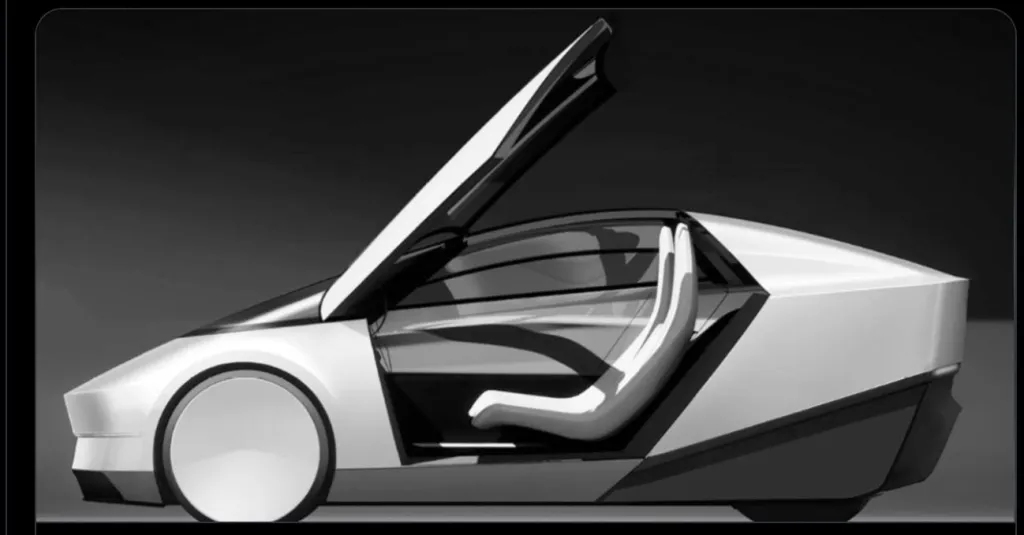Elon Musk’s journey creating Tesla’s robotaxi service has been a decade of audacious vision, technological challenges, and evolving timelines. Elon Musk first introduced the concept in 2016, presenting it as a key part of Tesla’s future. He promised a fleet of autonomous vehicles that could drive without human input, revolutionizing urban transportation. Like all things Elon Musk, time is more of a concept than a rule of thumb. The plan was to launch these robotaxis by 2020, but the complexity of fully autonomous driving and regulatory hurdles delayed the rollout multiple times. Despite these setbacks, Musk remains resolute that Tesla will ultimately succeed in this ambition.
Elon Musk’s vision for robotaxis centers around the idea of fully autonomous, driverless cars capable of picking up passengers without any human intervention. Tesla’s Full Self-Driving known as FSD, software is the foundation of this goal. FSD, first launched as a beta in 2019, was designed to make Tesla vehicles completely autonomous by leveraging sophisticated AI and advanced sensor technologies. This would effectively transform Tesla vehicles into robotaxi fleets that could be shared or even rented out by their owners, providing a source of income.
Elon Musk has often highlighted the economic potential of robotaxis. He envisions Tesla owners being able to activate their cars as robotaxis when not in use, turning personal vehicles into money-making assets. The financial projections for this endeavor are staggering. Tesla estimates that its robotaxi network could generate billions in annual revenue, with a long-term potential of $3 trillion globally. Yea, Elon Musk doesn’t think small! This network of Tesla robotaxis would cut the cost of rides dramatically, making it more affordable than traditional ride-hailing services like Uber or Lyft.
While the vision is grand, the road to achieving fully autonomous driving has proven difficult. Tesla’s FSD software is at the core of these challenges. Though Tesla vehicles come equipped with advanced hardware for self-driving, achieving full Level 5 autonomy – where the car can drive itself in all conditions without any human input – has been far more complex than anticipated. The company has faced setbacks in refining the AI to handle edge cases, or rare driving scenarios that require nuanced decision-making. Tesla’s autonomous driving technology has reached a stage where human drivers still need to remain attentive and ready to take control at any moment.
By 2023, FSD was being used by over 400,000 Tesla drivers, but the software still required human oversight. This meant Tesla had not yet reached the level of autonomy needed for robotaxis to function as initially envisioned. Elon Musk, however, has remained optimistic, often reiterating that full autonomy is within reach and that it’s only a matter of time before Tesla overcomes these technical challenges.
Tesla’s investment in robotaxis and autonomous driving technology has been massive. The company has spent billions of dollars on research and development to perfect its self-driving systems. Between 2016 and 2023, Tesla’s R&D expenditure ballooned, with a significant portion dedicated to AI and autonomous driving technologies. For instance, in 2021 alone, Tesla spent $2.6 billion on R&D, a large part of which went towards refining FSD. These investments are a testament to Tesla’s commitment to becoming a leader in the autonomous driving space.
Despite these financial commitments, the project has faced external pressures. Tesla’s stock has been volatile, especially as the company missed its initial 2020 robotaxi deadline. Delays in launching the robotaxi service, coupled with growing competition from other automakers and tech companies developing autonomous vehicles, have put Tesla under scrutiny. However, many analysts, including Morgan Stanley, have remained bullish on Tesla’s long-term prospects in this space. Analysts project that Tesla could still dominate the market if it successfully scales its robotaxi fleet by 2030.
In April 2024, Tesla announced it would finally unveil its long-awaited robotaxi during a major event on August 8, only to move the announcement to October. This highly anticipated event would have been seen as a potential turning point for Tesla’s autonomous driving ambitions, but what’s another few months of waiting.
According to Morgan Stanley, the unveiling of Tesla’s robotaxis will not only highlight Tesla’s advancements, but could also set the tone for the future of autonomous transportation well into the 2030s. The robotaxi Tesla is expected to showcase will be a vehicle with no steering wheel or pedals, representing a bold leap towards fully autonomous driving.
However, experts caution that the path to fully commercialized robotaxi services remains fraught with challenges. Beyond the technical hurdles, Tesla will need to navigate legal, regulatory, and ethical issues related to deploying autonomous vehicles on a mass scale. Governments and regulatory bodies across the world have been slow to approve fully driverless cars, citing safety concerns. There are also ethical questions surrounding the decision-making algorithms that power these vehicles, especially in life-or-death scenarios.
Despite these obstacles, the potential rewards are enormous. If Tesla can successfully roll out a fleet of robotaxis, it would fundamentally transform the company’s business model. Instead of being solely a car manufacturer, Tesla would become a leader in autonomous mobility services, potentially rivaling or surpassing ride-hailing giants like Uber and Lyft. The robotaxi fleet would also dramatically reduce the cost of transportation, making mobility more affordable and accessible.
Elon Musk’s decade-long quest to develop Tesla robotaxis has been marked by bold ambitions, staggering financial investments, and a series of technical and regulatory hurdles. While Tesla has yet to realize its vision of fully autonomous robotaxis, the company continues to push forward, with a major unveiling slated for 2024. Whether Tesla can meet its lofty goals remains to be seen, but if successful, the robotaxi network could redefine urban transportation and solidify Tesla’s place as a leader in the future of mobility.

